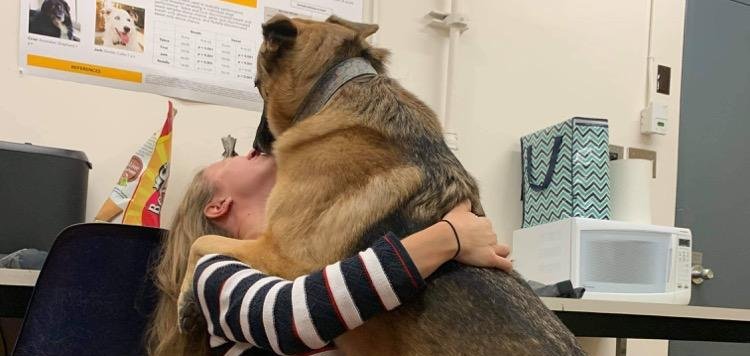Studies show that dogs may diagnose PTSD by sniffing human’s breath
Published in the journal Frontiers in Allergy, this study could potentially enhance the effectiveness of PTSD assistance dogs

Recent studies suggest that dogs can be trained to detect the onset of a flashback caused by Post-Traumatic Stress Disorder (PTSD). These dogs are trained to identify the unique scent in a person’s breath that is associated with past traumatic experiences. This research, published in the journal Frontiers in Allergy, could potentially enhance the effectiveness of PTSD assistance dogs.
PTSD is a mental health condition that can be triggered by terrifying, distressing, or stressful events. Individuals who have experienced such events often suffer from flashbacks and nightmares. Laura Kiiroja, a member of the Department of Psychology and Neuroscience at Dalhousie University in Canada, told The Independent that PTSD service dogs are already trained to assist individuals during distressing episodes. However, the current training focuses on behavioural and physical cues. This study revealed that some dogs could also detect these episodes through a person’s breath.

Each person has their own unique “scent profile”
According to the researchers, every human has a “scent profile” composed of volatile organic compounds (VOCs) that are released from the body through various secretions, including sweat. There is some evidence suggesting that dogs may be capable of detecting VOCs associated with human stress.
The study involved a group of 26 individuals, more than half of whom met the diagnostic criteria for PTSD. Participants were instructed to breathe into a facemask while recalling past traumatic events. The research team recruited 25 dogs for scent detection training, but only two dogs, Ivy and Callie, demonstrated skill and motivation throughout the experiments.
Kiiroja noted that both Ivy and Callie found the work inherently motivating, with their boundless enthusiasm for treats being a significant asset. The dogs were trained to recognize the odor from the facemasks, and they were able to distinguish between stressed and non-stressed facemask samples.
In a subsequent experiment to test their ability to accurately detect VOCs associated with stress, Ivy achieved 74% accuracy, while Callie achieved 81% accuracy. Ivy’s performance was linked to anxiety, and Callie’s was associated with shame. Kiiroja observed that while both dogs performed with high accuracy, they seemed to have slightly different interpretations of what constituted a ‘stressed’ breath sample.
You might also be interested in – Elon Musk posts video of man with Neuralink brain chip playing chess via ‘telepathy



